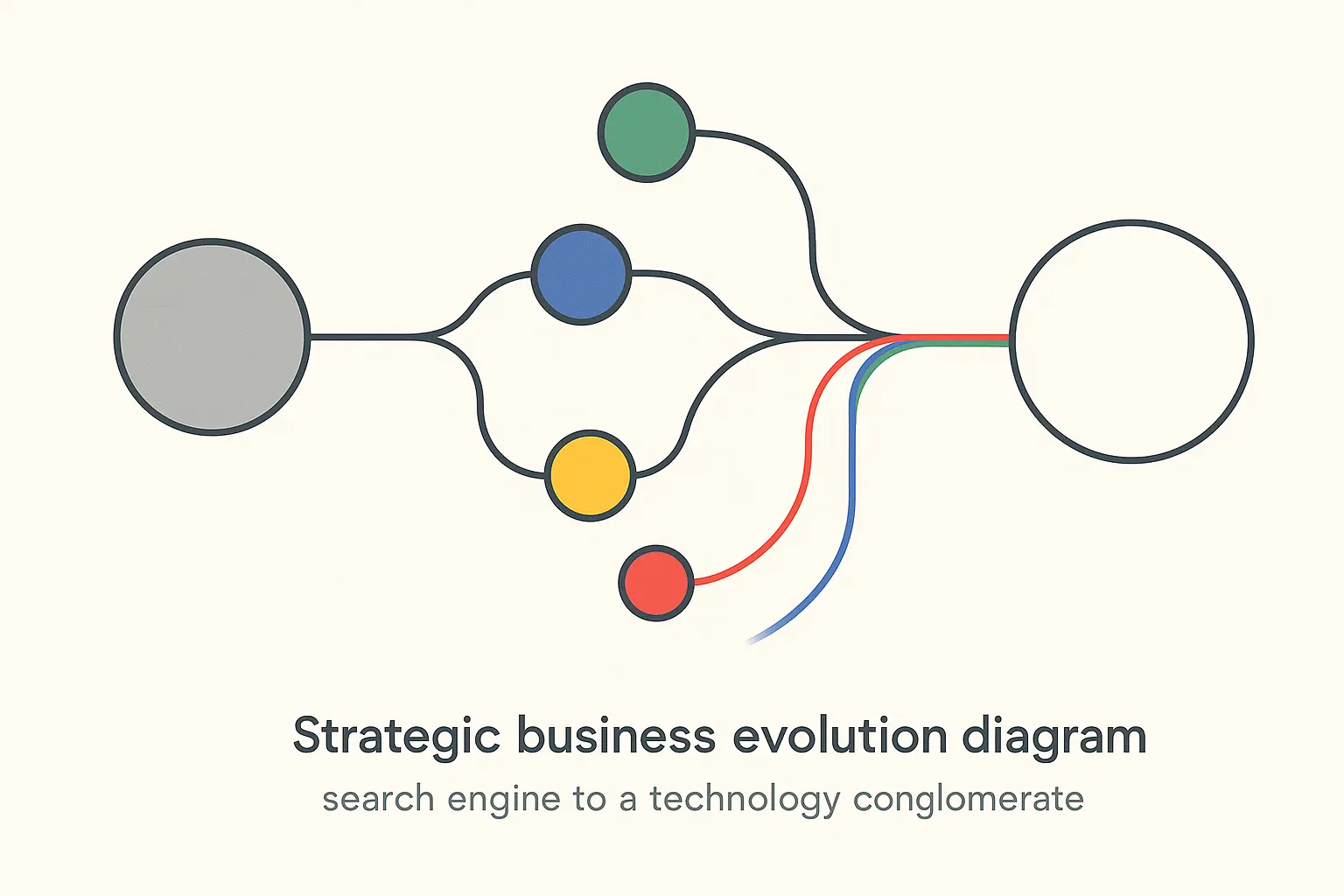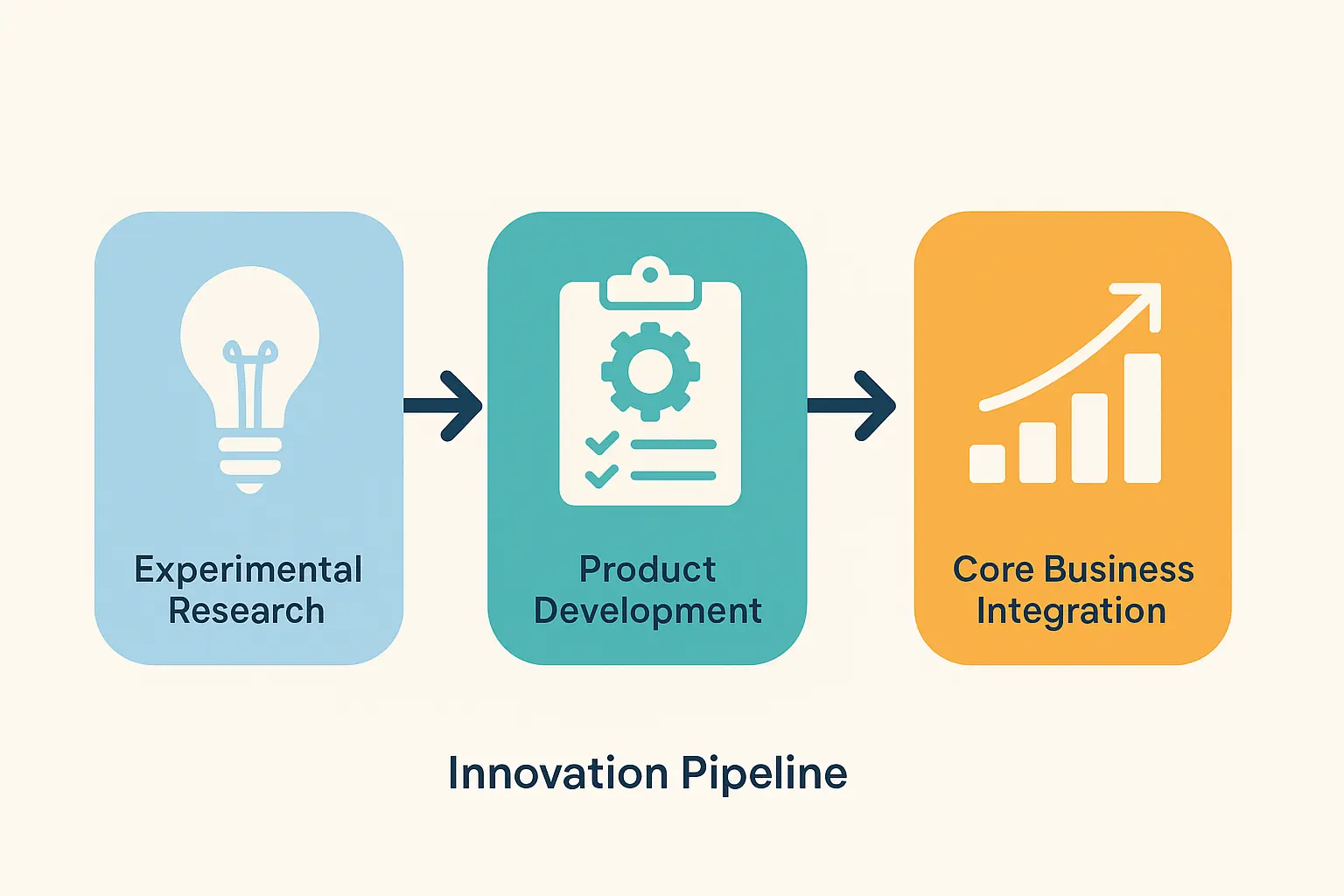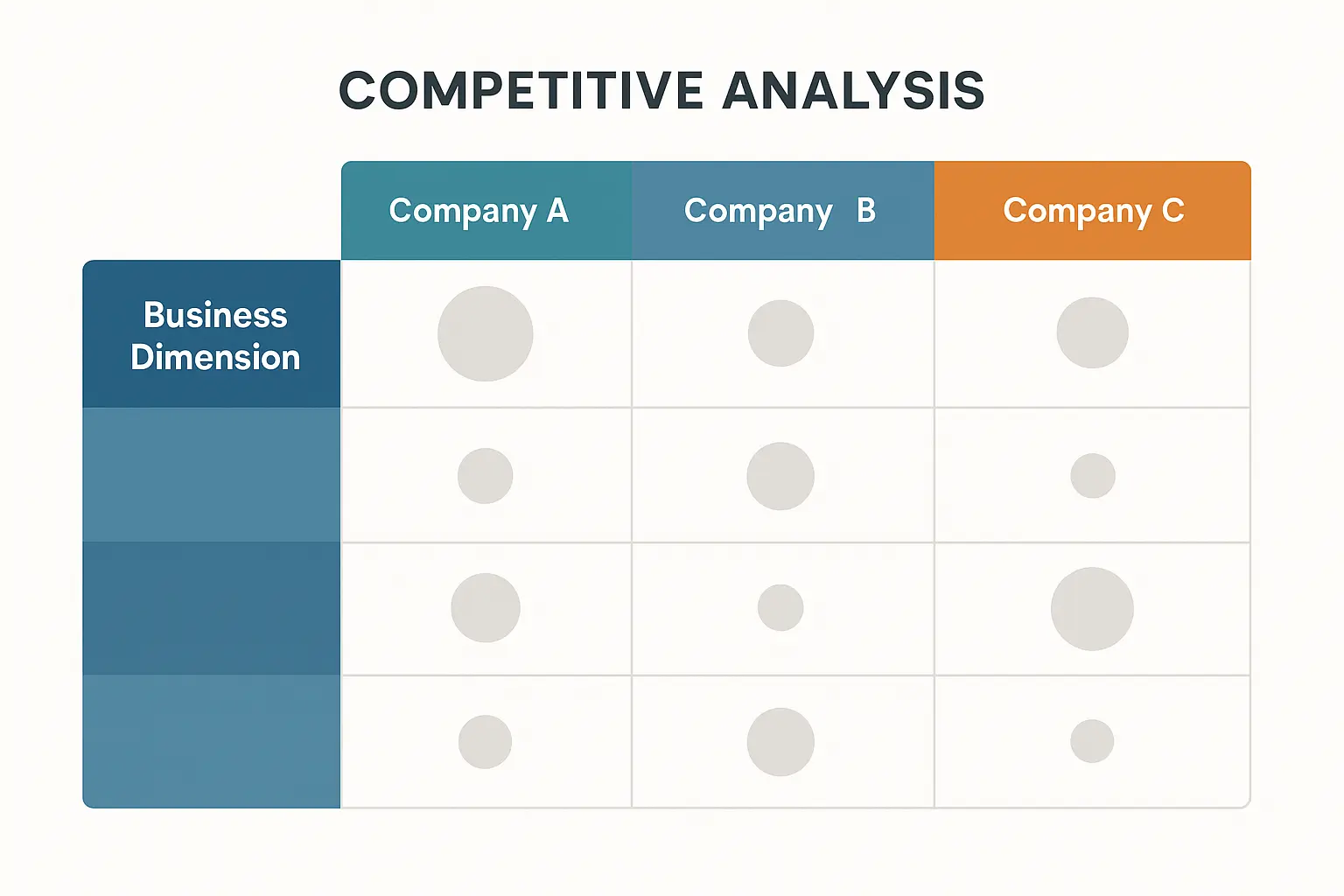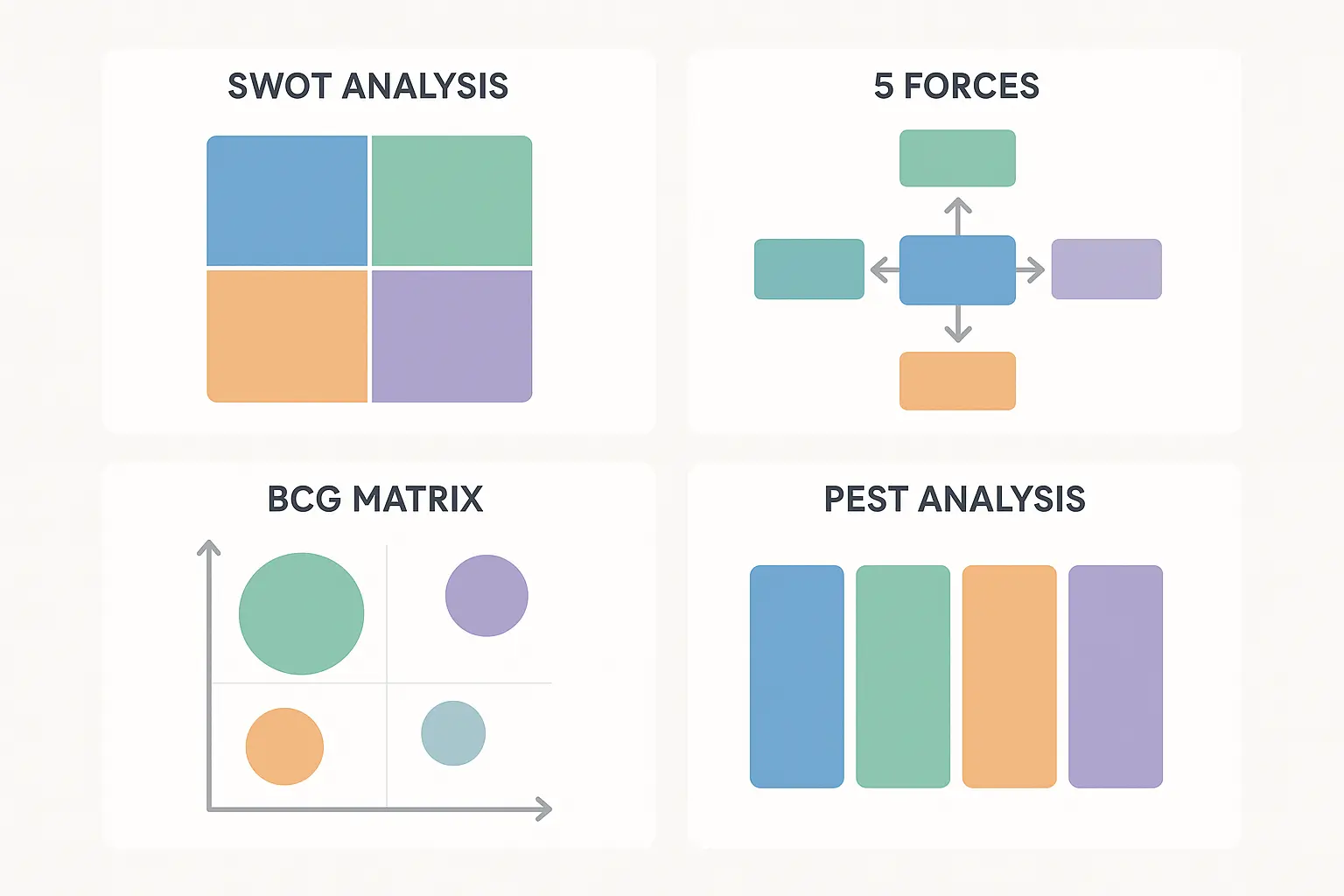Table of Contents
-
Understanding Google’s Strategic Evolution
-
Building Your Business Analysis Framework
-
Academic Research Integration Methods
-
Primary Source Investigation Techniques
-
Comparative Analysis Strategies
-
Google Scholar’s Hidden Strategic Value
-
Knowledge Management Principles
-
How The Marketing Agency Applies These Insights
-
Final Thoughts
TL;DR
-
Google case studies reveal how they actually figured out what works – and you can copy their approach
-
When I dug into their decision-making process, I found replicable frameworks for competitive positioning that work for any business
-
Academic research through Google Scholar shows how to balance crazy experimental stuff with keeping your core business running
-
Primary source investigation helps you understand the real financial story behind major strategic moves
-
Comparative analysis puts your strategies in context so you’re not operating in a bubble
-
Performance metrics from Google’s playbook offer benchmarks you can actually use, regardless of your industry
Understanding Google’s Strategic Evolution
Look, I’ve been down this rabbit hole for months now, and Google’s journey from search engine to… well, everything else… is honestly kind of wild when you break it down.
What really gets me is how they didn’t just stumble into success. I mean, sure, there was some luck involved, but when you dig into their actual decisions, there’s this methodical approach that most people completely miss. They’re not just throwing stuff at the wall to see what sticks.
I’ll be honest – when I first started studying this, I thought it was going to be another “Google is amazing” puff piece. But the more I dug in, the more I realized they’ve actually screwed up plenty of times. The difference is how they handle those failures.
Take their revenue numbers – $307.4 billion in 2023, up 9% year-over-year. That’s not accident money. That’s “we have a system and we stick to it” money. And here’s what’s crazy: most of that comes from advertising, which they initially didn’t even want to do.
According to comprehensive case study analysis, Alphabet’s financial scale underscores how systematic strategic thinking translates into measurable business outcomes – they went from two Stanford students with a better search algorithm to a $307.4 billion revenue machine.
The founders actually hated the idea of ads because they thought it would mess up search results. But when they finally caved and built AdWords, they didn’t just slap ads everywhere like every other search engine was doing. They made the ads actually useful, which sounds simple but was revolutionary at the time.

Strategic Business Analysis Framework
Here’s where it gets interesting. Google doesn’t make random moves, even when it looks like they do. Every major decision fits into this bigger picture that balances what’s working now with what might work in ten years.
I spent way too much time trying to figure out their decision-making process, and it basically comes down to three things: they obsess over data, they test everything, and they’re willing to wait longer than most companies for results.
You can see this playing out in everything they do. When everyone was panicking about mobile, Google had already bought Android for $50 million back in 2005. Most people didn’t even know what Android was going to become, but Google saw the writing on the wall.
For businesses looking to implement similar data-driven approaches, understanding advanced analytics for strategic growth becomes essential for translating Google’s systematic thinking into actionable business intelligence.
Business Model Evolution Analysis
The thing that blew my mind about Google’s evolution is how their business model wasn’t even their original plan. They were academics who wanted to organize information, and they ended up building the world’s most sophisticated advertising machine.
But here’s what’s smart about it – they didn’t abandon their original mission. They figured out how to make advertising actually serve that mission. AdWords works because it shows people ads for things they’re actually looking for. Revolutionary? Maybe not. Effective? Absolutely.
Their acquisition strategy follows a clear pattern too, though it took me forever to see it. They don’t buy companies for revenue – they buy them for talent and technology that makes their core stuff better. Android wasn’t about making phones; it was about making sure people could search Google from their phones.
|
What They Bought |
When |
Price |
Why It Actually Mattered |
What Happened |
|---|---|---|---|---|
|
Android |
2005 |
$50M |
Mobile search dominance |
World’s dominant mobile OS |
|
YouTube |
2006 |
$1.65B |
Video ads + user data |
Second most visited website globally |
|
DoubleClick |
2007 |
$3.1B |
Better ad targeting |
Strengthened digital advertising dominance |
|
Waze |
2013 |
$966M |
Location data for everything |
Integrated into Google Maps |
|
Nest |
2014 |
$3.2B |
Smart home data collection |
Google hardware division foundation |
|
DeepMind |
2014 |
$400M |
AI that powers everything now |
Central to Google’s AI strategy |
Competitive Positioning Studies
Google’s competitive responses are fascinating because they don’t always do what you’d expect. When Microsoft launched Bing and threw a billion dollars at marketing, Google didn’t panic. They just kept making search better and expanded into areas where Microsoft couldn’t follow.
The Chrome browser launch is a perfect example. Everyone thought “Why does Google need a browser?” But it wasn’t about browsers – it was about controlling how people access the internet. Genius move in hindsight.
Google+ though? That was them completely misunderstanding how social networks actually work. They thought they could engineer social connections the same way they engineered search results. Turns out people are messier than algorithms.
When Microsoft integrated ChatGPT into Bing in 2023, Google’s response showed they learned from the Google+ mistake. Instead of rushing out a copycat product, they accelerated their own AI development and launched Bard when it was ready, not when the competition forced their hand.
Innovation Pipeline Assessment
Google X is probably the most interesting part of their strategy that nobody talks about enough. They’re literally paying smart people to work on projects that might never make money, and somehow this makes business sense.
Their 70-20-10 rule is brilliant: 70% of resources on core business (search, ads), 20% on emerging opportunities (cloud, hardware), 10% on crazy experimental stuff (self-driving cars, internet balloons). Most companies can’t stomach that 10%, but it’s where breakthrough innovations come from.
DeepMind is the perfect example. They bought an AI research company for $400 million when most people thought AI was still science fiction. Now that AI powers improvements across everything Google does. That’s not luck – that’s strategic patience.

Market Expansion Methodologies
Google’s international expansion reveals how they think about local markets. They don’t just translate their products – they rebuild them for different contexts. Their China strategy shows both their ambition and their limitations when local conditions don’t match their business model.
Europe required a completely different approach. GDPR wasn’t just a compliance headache for them – they turned privacy requirements into a competitive advantage by building better privacy tools than smaller competitors could afford to develop.
Building Your Business Analysis Framework
Look, you don’t need Google’s resources to think like Google. I’ve been working on adapting their strategic thinking for smaller organizations, and the key is understanding their decision-making process, not copying their specific moves.
The framework I’ve developed combines their methodologies with practical constraints that actual businesses face. You can apply their strategic thinking patterns without needing their scale or resources.
When developing comprehensive analysis frameworks, businesses often need to understand market sizing for business opportunities to properly contextualize strategic decisions within their addressable market potential.
Here’s what actually matters:
-
Figure out your core revenue drivers (and be honest about what’s actually working)
-
Map out who you’re really competing against (not just obvious competitors)
-
Decide how much you can afford to spend on experimental stuff
-
Look for strategic partnerships that strengthen your core business
-
Track the metrics that actually predict future performance
-
Document your decision-making process so you can improve it
-
Study how successful expansions happen in your industry
Primary Source Investigation
This is where most people get lazy, but it’s the most important part. Google publishes tons of information about their strategy through SEC filings, earnings calls, and official communications. The trick is reading between the lines.
Their segment reporting tells you exactly where they’re making money and where they’re investing for the future. R&D spending patterns predict product launches before they’re announced. Executive communication styles reveal strategic priorities and internal tensions.

Financial Performance Analysis
The numbers don’t lie, even when the press releases try to spin them. Google’s revenue growth patterns show which initiatives actually drive results versus which ones just generate headlines.
When Google Cloud finally turned profitable in 2023 with over $4 billion in operating income, that wasn’t just a financial milestone – it validated years of strategic investment that Wall Street had been questioning. The cloud business went from being a money pit to a growth engine, showing how their patient capital approach actually works.
You can predict their future moves by watching where they’re spending development money. The relationship between user growth and revenue per user shows how they balance growing their audience with making money from them.
According to detailed financial analysis, Google maintains approximately 90% of global internet search queries as of 2020 (about 90% share on desktops and 95% on mobile devices), demonstrating how market dominance translates into financial performance.
Strategic Communication Assessment
Google’s communication strategy is almost as interesting as their business strategy. What they say publicly, when they say it, and how they say it reveals their strategic thinking.
Sundar Pichai’s communication style is completely different from Larry Page’s, reflecting different priorities and market conditions. These changes often predict strategic shifts before they’re officially announced.
During antitrust investigations, their communication showed how they balance transparency with legal strategy. The language they use reveals both their business priorities and their legal positioning.
Academic Research Integration Methods
Here’s something most business analysts miss: academic research provides perspective that business journalism can’t match. Peer-reviewed studies track Google’s evolution over years, not quarters, which reveals patterns that short-term analysis misses.
I combine academic research with primary source analysis because academics ask different questions than business reporters. They’re looking at long-term implications and systematic patterns, not just quarterly performance.
Google Scholar isn’t just a research tool – it’s a case study in how Google extends their strategic thinking into academic knowledge management. Recent studies show how their AI-powered advertising consistently outperforms manual campaigns across thousands of brand campaigns, validating their systematic approach to innovation.
Recent developments demonstrate the practical application of Google’s strategic framework. “Nielsen + Google: Quantifying the Power of AI in Advertising” shows how Google’s AI-powered advertising solutions consistently outperformed manual campaigns in both ROAS and sales effectiveness across over 50,000 brand campaigns and over 1 million performance campaigns.
Scholarly Literature Review Process
Academic research about Google requires systematic evaluation because not all studies provide actionable business insights. The best research combines multiple disciplines – business strategy, technology analysis, behavioral economics – to reveal patterns that single-focus studies miss.
Longitudinal studies are gold mines because they track Google’s evolution over multiple years, showing strategic consistency and adaptation that quarterly business analysis can’t capture.

Research Methodology Application
Academic research frameworks provide structure for analyzing Google’s decisions objectively. Quantitative analysis reveals performance patterns, while qualitative assessment explains the strategic reasoning.
The systematic approach to data collection and analysis ensures reliable insights rather than speculation based on incomplete information. Mixed-method approaches combine statistical analysis with qualitative evaluation to provide comprehensive understanding of both what happened and why.
Primary Source Investigation Techniques
The challenge with Google isn’t finding primary sources – they’re surprisingly transparent. The challenge is evaluating official communications for strategic insight while accounting for the fact that everything they say serves multiple audiences with different needs.
When I analyzed their cloud strategy transformation, SEC filings revealed the path from loss-making investment to profitable business unit. Google Cloud’s 2023 profitability wasn’t just good news – it validated their entire strategic approach to entering established markets through patient capital investment.
When analyzing Google’s cloud strategy, primary source investigation reveals the transformation from loss-making investment to profitable business unit. SEC filings show Google Cloud turned profitable in 2023, with over $4 billion in operating income on $31.3 billion revenue in the first three quarters of 2024.
Comparative Analysis Framework
You can’t understand Google’s strategic effectiveness without comparing them to competitors. The framework I use examines decisions across timing, resource allocation, execution, and outcomes to reveal what makes their approach unique versus what’s just industry standard practice.

Industry Benchmarking
Comparing Google’s performance to industry leaders reveals where they excel and where they face challenges. Their search dominance creates advantages in some areas while potentially creating blind spots in others.
Their cloud computing approach versus Amazon and Microsoft shows how technical superiority doesn’t always translate to market success. Different strategic advantages create different competitive dynamics.
|
What They’re Good At |
|
Microsoft |
Amazon |
Apple |
Meta |
|---|---|---|---|---|---|
|
Search |
Dominates (~90%) |
Struggling (~3%) |
Not playing |
Not playing |
Not playing |
|
Cloud |
Playing catch-up (#3) |
Strong (#2) |
Leading (#1) |
Not playing |
Not playing |
|
Mobile OS |
Leading (~70% Android) |
Failed |
Not playing |
Strong (~28% iOS) |
Not playing |
|
Digital Ads |
Huge ($221B) |
Growing fast |
Growing fast |
Not really |
Huge (~$135B) |
|
AI Strategy |
Search + Cloud focus |
Productivity focus |
Alexa + Cloud |
Privacy focus |
Social + VR focus |
|
R&D Investment |
~14% of revenue |
~13% of revenue |
~12% of revenue |
~6% of revenue |
~20% of revenue |
Cross-Industry Pattern Recognition
Google’s strategic patterns apply beyond technology. Their platform development approach mirrors successful strategies in automotive, retail, and financial services. The principles of creating interconnected value propositions work across industries.
Understanding how they leverage network effects and data advantages provides frameworks for strategic thinking in completely different contexts. Network effects that power Google’s success exist in many industries – understanding how they work gives you templates for building competitive advantages.
Timeline-Based Strategic Evolution
Looking at Google’s decisions chronologically reveals how their strategic thinking evolved in response to market changes. Early decisions created path dependencies that influenced later choices.
Their approach to emerging technologies shows systematic thinking about innovation timing – they’re rarely first to market, but they’re usually first to make it work at scale. Market timing analysis shows how they balance being early with waiting for market readiness.
According to comprehensive financial analysis, Alphabet’s net income topped $100 billion in 2024, illustrating how their strategic timeline decisions and systematic approach to business model evolution translate into exceptional profitability.
Comparative Analysis Strategies
The key to useful comparative analysis is understanding what makes Google’s approach distinctive versus what’s just industry best practice. This distinction is crucial for extracting insights you can actually use.
I’ve developed frameworks that compare strategic decisions across multiple dimensions to reveal patterns that apply to other business contexts, not just tech companies.

Google Scholar’s Hidden Strategic Value
Most people think Google Scholar is just a search tool for academics, but it’s actually a brilliant strategic move that serves multiple purposes. It builds relationships with universities, establishes Google as an authority in knowledge management, and creates additional data collection opportunities.
For businesses developing knowledge optimization strategies, Scholar demonstrates how Google thinks about long-term authority building in specialized domains. Understanding how Google Scholar fits into broader knowledge optimization strategies becomes crucial when developing knowledge graph optimization approaches that help businesses structure their content for better discovery and authority building.
Scholar Platform Strategic Analysis
Scholar’s strategic value becomes clear when you see it as part of Google’s broader information ecosystem. Academic content indexing enhances their core search algorithms while serving specialized communities.
The relationships with universities and research institutions provide competitive advantages that extend far beyond academic search, supporting Google’s education and enterprise strategies.

Academic Content Indexing Strategy
Academic content requires different algorithms than general web search, and Scholar’s success demonstrates Google’s ability to adapt core competencies to specialized markets. The indexing strategy balances comprehensive coverage with quality assessment using different authority signals than general web content.
This scholar-specific approach creates value for academic users while advancing Google’s broader content classification capabilities. Integration with Google’s broader search ecosystem creates synergies that benefit both general search users and academic researchers.
Institutional Partnership Development
Scholar creates strategic partnerships that extend beyond the platform itself. Universities become stakeholders in Google’s ecosystem, with researchers serving as influential advocates within academic communities.
These relationships support education initiatives, enterprise sales, and talent recruitment while providing strategic advantages in content negotiations across Google’s entire ecosystem. Publisher relationships developed through Scholar influence Google’s approach to content licensing and copyright issues across their entire platform ecosystem.
Knowledge Management Principles
Google Scholar reveals broader principles about information architecture and knowledge accessibility that inform strategic decisions across the organization. Their approach to organizing complex information provides frameworks for business intelligence and strategic analysis.
These knowledge management principles align closely with modern answer engine optimization strategies that help businesses structure information for AI-powered search systems and knowledge discovery platforms.
Recent examples show these principles in action. “Marketing mix modelling as your growth engine” showcases how brands like Suntory Wellness and Nexon use sophisticated measurement approaches that mirror Google’s knowledge management philosophy applied to marketing analytics.
Information Architecture Principles
Scholar’s approach to organizing academic information influences Google’s method for structuring complex information across all products. The balance between comprehensive functionality and accessibility demonstrates strategic thinking about serving diverse user communities.
Search result presentation and ranking algorithms adapted for academic content show how Google modifies their core competencies for specialized applications while maintaining consistent user experience principles.

Scholar’s citation tracking system exemplifies these principles by mapping relationships between papers, authors, and institutions, creating a knowledge graph that serves researchers while demonstrating Google’s capability to organize interconnected information – a competency that enhances their core search algorithms and supports AI development across all products.
How The Marketing Agency Applies These Insights
Everything I’ve learned from studying Google directly informs how we approach client challenges. Google’s systematic, data-driven decision making aligns perfectly with our philosophy that every move should be backed by proper data and insights.
We’ve adapted Google’s balance between experimental innovation and core business optimization. When analyzing campaign performance, we apply the same rigorous methodology Google uses for strategic decisions. You always know what’s working, what’s not, and where every dollar is going.
Our approach to performance measurement draws directly from Google’s analytical frameworks, which is why we emphasize marketing ROI calculations that provide the same level of transparency and accountability that Google applies to their strategic initiatives.
Understanding Google’s evolution toward AI-powered search has informed our development of generative engine optimization strategies that help clients maintain visibility as search technology continues advancing toward more conversational and contextual discovery methods.
How We Apply Google’s Framework:
-
Use the 70-20-10 resource allocation for client campaigns
-
Apply systematic experimentation to marketing tests
-
Make data-driven strategic recommendations
-
Establish clear performance metrics and tracking
-
Balance short-term performance with long-term positioning
-
Create integrated approaches across marketing channels
-
Maintain strategic patience while optimizing for immediate results
-
Continuously analyze competitive positioning

Ready to apply Google’s strategic thinking to your marketing challenges? Contact The Marketing Agency to discover how data-driven decision making can transform your marketing performance.
Final Thoughts
Here’s what really impressed me after months of studying Google’s evolution: it’s not about having great technology. It’s about systematic strategic thinking, rigorous performance measurement, and the discipline to make data-driven decisions even when they contradict what everyone else is doing.
The most valuable insight is their systematic approach to balancing current performance with future opportunities. Their resource allocation models and decision-making frameworks provide templates that work across different industries and company sizes.
What surprised me most was discovering how Google Scholar demonstrates strategic patience – investing in relationships and capabilities that don’t immediately generate revenue but create long-term competitive advantages. This challenges the short-term thinking that dominates most business strategies.
The financial performance analysis techniques help you understand the real impact of strategic decisions beyond surface-level metrics. Google’s transparency in reporting provides a masterclass in connecting strategic initiatives to business outcomes.
Remember, Google’s success isn’t about having the best engineers or the most money – it’s about systematic strategic thinking that you can adapt whether you’re running a startup or managing marketing campaigns for established businesses. These principles apply regardless of your industry or company size.




